[ad_1]
This past month, State Superintendent Dr. Jill Underly released a series of commentaries talking about race and the importance of talking about racism.
In it she brought up a lot of points about why it is important for these issues to be taught, saying, “Teaching about race and racism is the only way to teach the complete story of the United States … I believe we have no other choice but to teach about it and learn from it if we want to protect the strength of our state and nation.”
It is important for a complete version of American and world history to be taught and that includes teaching students about the ugly parts of the past, as well as the good. Seeing how our country has evolved over the years will help students better understand how society works today and help the students – our leaders of tomorrow – make decisions that will affect the future of our communities.
So yes, we need to teach students about slavery and civil rights and how other minority groups were treated in the past.
People are also reading…
But education leaders like Underly also need to be careful not to ostracize those who don’t agree with them. Unfortunately that is exactly what Underly did when she essentially said that anyone who doesn’t agree with her philosophy on teaching about racism is racist.
To quote her directly she said, “Teaching about race and racism is essential, it is culturally relevant, it is good teaching, and saying otherwise is not only problematic, it’s racist.”
By saying that, she didn’t evoke discussion. She instead shot down the conversation, condemning anyone who does not agree with her.
Insulting and name calling those who don’t agree with you is not the way to have an honest conversation.
Race and racism is a sensitive subject and it is important to talk about. But to have an honest conversation, you cannot call others racist just because they don’t agree with you.
20-plus photos of Kenosha’s Nash Motor Company, before Chrysler
Nash Motors Assembly Line, February 1942

Nash Motors assembly line, February 1942
Nash Motors engineering department, 1942

Nash Motors engineering department, 1942
Nash Motors from the air

An aerial view of the Nash Motors plant looking northwest in the early 1950s. In 1954, Nash-Kelvinator Corporation joined with Hudson Motor Car Company to form the American Motors Corporation. 60th Street and 30th Avenue border the now vacant site.
Nash workers head to a summer picnic in 1936

Nash Motors’ office employees load up for the annual summer picnic bound for Lake Lawn Lodge in Delavan in 1936. This scene unfolded on what is now the vacant Chrysler property.
Nash seats six

This is the view through an open roof of a six-passenger Nash automobile, circa 1930.
1948 Nash pickup truck
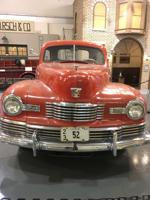
The front of the 1948 Nash pickup truck. The Iowa license plate was randomly selected by the collector.
1948 Nash pickup
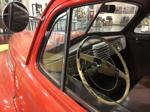
The side-view mirror and interior of a 1948 Nash pickup truck are shown.
The millionth Nash

Nash Motors celebrates the millionth car. This vehicle was finished in the later part of April 1934. Numbering the cars started when Nash Motors bought the factory from the Thomas B. Jeffery Co. in 1916. In 1934, the company was turning out cars at the rate of 16 per hour.
Take me out to the ball game

This Kenosha Evening News photograph shows Charles Nash at a baseball game in the 1920s.
Merger forms American Motors Corp.
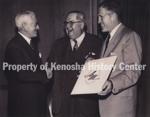
On May 1, 1954, the merger was completed by Nash-Kelvinator Corp. and Hudson Motor Co., forming American Motors Corp. Pictured are Hudson president A.E. Barit, who became AMC director, left, George W. Mason, who became AMC chairman and president, center, and George Romney, executive vice president, father of Utah senator and former presidential candidate Mitt Romney.
Charles Nash at work
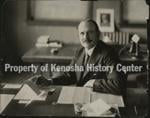
Nash Motors founder Charles W. Nash was photographed at his desk, circa 1920.
Nash
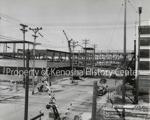
Nash Motors Building 45, Service and Export, is shown being constructed in May 1952. The view is looking east on 52nd Street across the Chicago North Shore and Milwaukee Electric Railroad tracks.
Nash Motors building goes up

Nash Motors Building 45, Service and Export, is shown being constructed in May 1952. The view is looking east on 52nd Street across the Chicago North Shore and Milwaukee Electric Railroad tracks.
Eleanor inspecting an engine

Eleanor (McAllister) Christenson, second from left, demonstrates the process of inspecting an aircraft engine produced at Nash Motors for the Navy during World War II.
Nash 1952

A worker mixes molten metal in the die casting department at the Nash Motors plant, circa 1952.
Nash 1952
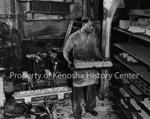
A factory worker moves sand cast molds at Nash Motors in June of 1952.
Nash Heat Treating Department
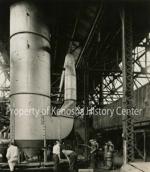
Workers assemble track lines in the Heat Treating Department of Nash Motors’ Kenosha plant during the 1950s.
Working at Nash Motors in 1952

Workers are pictured in the Die Casting Department of the Nash Motors Co. Kenosha plant in 1952.
Nash Ambassador for all seasons

A spokesmodel poses for an advertising photograph with a Nash Ambassador circa 1953.
Inside Nash Motors

This is a view of the Heat Treating Department of the Nash Motors’ Kenosha plant in 1952.
Die casting at Nash

A worker in the Die Casting Department works at the Nash Motors plant in 1952.
Thomas B. Jeffery at work

Thomas B. Jeffery works at his desk, circa 1905 to 1910. The Thomas B. Jeffery Co. was founded in 1900 and was famous for the one-cylinder Rambler. The company produced various automobiles such as the modern station wagon, Rambler camper and Quad trucks until 1916, when the company was sold to Charles Nash for $5 million. The Thomas B. Jeffery Co. also invested more than $1,000 to put up the first road signs in Kenosha County.
[ad_2]
Source link















